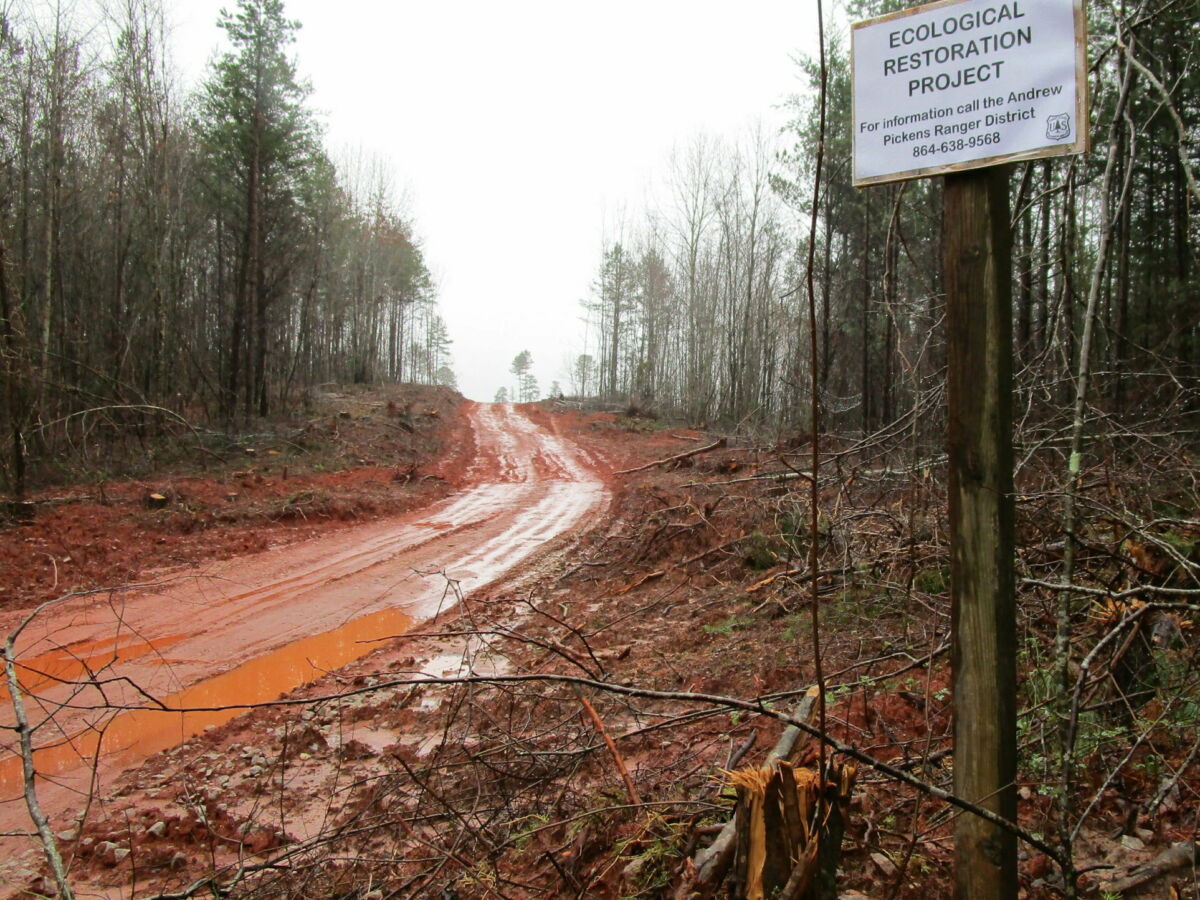White Pine Project – SC
The Andrew Pickens Ranger District in SC has released their final EA, Draft Decision Notice, and Finding of No Significant Impact for the White Pine Management Project. Objections will be accepted until 11:59PM on Friday, April 16th. Please make your voice heard!
Talking Points
Thanks to all who provided their input on the APD’s scoping notice, Proposed 40-Acre Exemption, and Draft EA for the White Pine Project! The APD has made some changes to their original proposal throughout the process, but unfortunately the Forest Service discounted or sidestepped the overwhelming majority of citizens’ concerns. Ours remain regarding negative impacts to old growth, recreation resources, soils, erosion and sedimentation into streams, and the cumulative impacts of clear-cutting across the landscape. Some of these issues are addressed below, in response to the EA’s content.

- Old Growth: The EA fails to acknowledge the importance and need for managing specific areas of the forest to restore an old growth network. Of all the habitats in eastern North America, old growth forests are the scarcest, and this is especially true in the APD. In the project area, relatively small and isolated old growth stands are located at Swafford Creek, Sandy Ford Road, Mongold Gap, Big and Little Stakey Mountains near Orr Mill Road, Long Creek, Callas Mountain, and Reed Mountain and Hickory Top in the Chattooga Wild & Scenic Corridor. Two of these old growth areas are contiguous with the proposed white pine timber harvests and/or the loblolly pine clear-cuts, and several others are within short distances. The rare old growth stands in the project area should be cared for through establishing a connected network of intact native forests, not surrounded by clear-cuts, prescribed burns, and systematic herbicide treatments.
- Silvicultural Treatments (Timber Cutting Prescriptions), Preserving Scenery & Recreation Resources: The EA proposes that the overwhelming majority silvicultural treatments will be clear cuts. This is a heavy-handed forestry practice often utilized to cultivate crop trees of new pine stands. As with the Loblolly Removal Project, we believe the White Pine Project is largely geared to replace one pine plantation—white pine and/or loblolly—with another pine plantation—shortleaf, pitch and/or Table Mountain. The APD’s forestry practices should employ single tree or small group selection forestry practices to restore a predominantly hardwood forest, conserve a multitude of sensitive natural resources, and preserve recreation resources and the visual quality attributes of our public lands.
- Streams, Aquatic Resources, and Soils: Even with use of appropriate BMPs, the cumulative impacts of the White Pine Project and the ongoing Loblolly Pine Removal & Restoration Project could degrade soils and high quality streams in the project area. The majority of the streams in the project area are classified Outstanding Resource Waters (ORWs) or “TN” streams, and both classifications carry higher water quality standards to protect aquatic habitat and maintain existing stream uses. Timber harvests associated with the two projects would be occurring on the district at the same time, and in some cases on adjacent stands. Even if all appropriate design criteria, Forest Plan standards, and Best Management Practices (BMPs) are followed, soils and sensitive riparian areas and high quality streams in the project area could be seriously damaged by proposed road construction and harvesting activities. While the Forest Service states both projects will follow appropriate design criteria and BMPs to protect both water quality and soils, we do not agree that these measures offer sufficient protection for these fragile resources. The Forest Service must avoid the potential combined negative impacts from concurrent and adjacent timber harvests to soils and aquatic resources.
- Cumulative Impacts: The EA discounts any significant cumulative impacts of concurrent projects on the APD, and we disagree with this broad evaluation. For example, plainly apparent to the casual observer are localized negative impacts to soils from the ongoing Loblolly Project, where multiple instances of excessive erosion and sedimentation have occurred in the Turkey Ridge Road area and Charlie Cobb Rd area. Another example concerns wildlife corridors that will be destroyed due to the cumulative impacts of the concurrent Loblolly, White Pine and prescribed burning projects, which clearly would disrupt migratory corridors for wildlife across thousands of acres in the APD.
Project Changes from Scoping Notice to EA:
- Total acreage reduced from 2,148 acres to 1,952 acres: 1,195 even-age/clear-cuts with reserves, 59 acres of commercial thinning, and 698 acres uneven-age group selection.
- Increased target basal area range from 70-90 sq. ft. to 90-110 sq. ft.
- Modified harvests on Round Mountain to a patch network of clear-cuts with one area of uneven-age harvest on the southeast side.
- Modified harvests and treatments near Rocky Gap Horse Trail to do thinning instead of regenerating, use buffers, etc. to reduce number of trail segments and miles that overlap with harvests. Removed C32/S5.
- Modified harvests around John Mtn/Old Field Mountain slightly.


